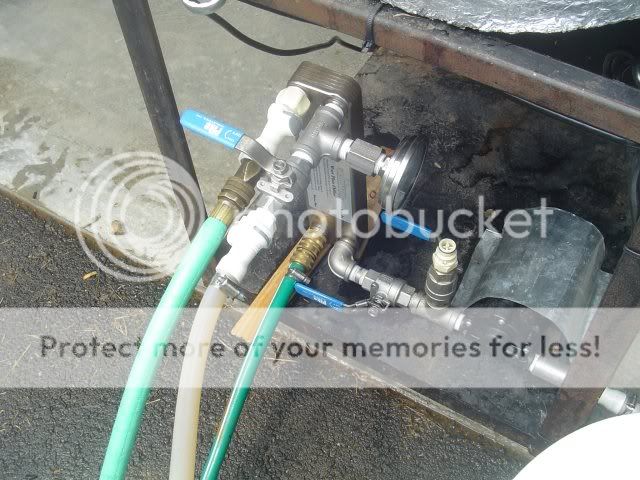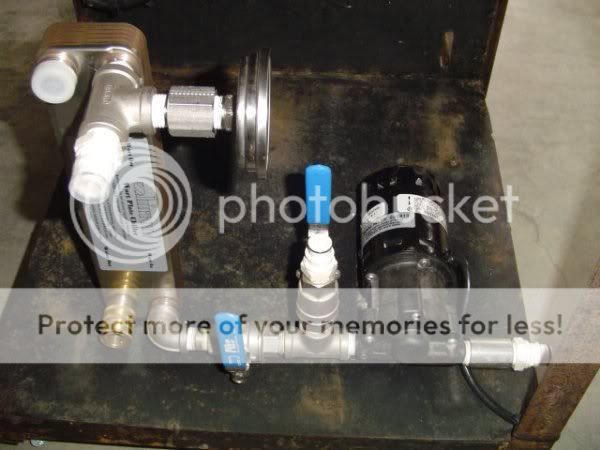I plan on buying a March 809 pump from NorthernBrewer because I have a NHC 15% off total order coupon.
*Pump qualifies!!!
http://pivo.northernbrewer.com/nbstore/action/search-do?searchTerm=%22March+809+pump%22
Eventual plans are for a 1 tier setup. 2-tier for now.
Uses will be:
I figure I need some QD's.
Heard some murmers about some sort of bypasss to regulate flow.
What dooddads am I gonna need?
How are you running these?
Pics?
*Pump qualifies!!!
http://pivo.northernbrewer.com/nbstore/action/search-do?searchTerm=%22March+809+pump%22
Eventual plans are for a 1 tier setup. 2-tier for now.
Uses will be:
- To pump hot water from the HLT to the MT.
- Perhaps a re-circ from my plate-chiller back to the boil keggle ala Jamil http://www.mrmalty.com/chiller.php
Q: Can't I do this same thing using my counter-flow/plate chiller?A: Yes, you can. Several people have reported good results using their counter-flow devices. Just run the output from the device back into the kettle. You'll probably get less of a whirlpool effect, but the chilling should be just as good, no DMS and great hop character.
- Move wort to the carboy
I figure I need some QD's.
Heard some murmers about some sort of bypasss to regulate flow.
What dooddads am I gonna need?
How are you running these?
Pics?






